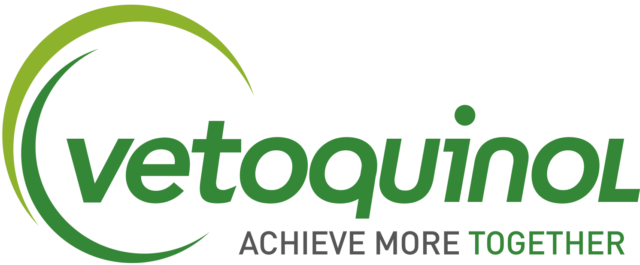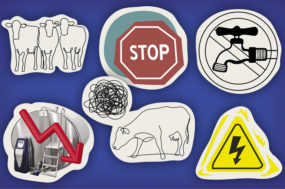“Dairy cow longevity: Impact of animal health and farmers' investment decisions.” Journal of Dairy Science, Vol. 106 No. 5, 2023. This article, from researchers from Sweden and South Africa, studied the dairy farmer’s decision to cull or keep dairy cows, namely by investigating the relationship between cow longevity and farm investments, while controlling for farm-specific characteristics and animal management practices, by using Swedish dairy farm and production data for the period 2009 to 2018. The authors, citing different sources, indicate that the longevity of dairy cows has gained increased attention in recent years, largely due to the environmental and economic consequences associated with short longevity. The culling of dairy cows early in the production cycle (i.e., before the cow is biologically old) is regarded as an unsustainable practice from both an economic and environmental point of view. On the other hand, the concept of longevity has also been linked to animal welfare, since short longevity and the practice of culling dairy cows at a young age signal that animals are not kept in such a way that they can function in production over an extended period of time.
The authors provide information about the Swedish dairy farming industry, indicating the following averages: Number of cows per herd is 88, milk production per lactation is 9,656 kilograms energy-corrected milk (ECM), age at first calving is 856 days (28.1 months), age at culling is 1,884 days (5.2 years), and the productive lifespan is 1,028 days (2.8 years). In terms of milking systems, the tiestall milking system is the most popular, used by 51% of the dairy farms, followed by automated milking systems and milking parlours. The rotary system is the least common system. In terms of breed, 39% of the farms had a herd with crossbreeding between the Swedish Red and the Swedish Holstein, which together constituted more than 50% of the herd.
The authors explain that culling decisions are usually influenced by intrinsic and extrinsic factors, where the intrinsic factors include health, milk yield and reproductive status. Extrinsic factors influencing cow longevity include availability of replacement heifers, milk yield, land availability and prices. Some research indicates that many cows are removed because of metabolic health reasons, but others have added that average cow longevity is based on extrinsic economic factors that are not related to the cow’s health and performance.
Although there is considerable research regarding reasons why cows leave the herd, the authors say that the longevity of dairy cows in the herd is determined by culling decisions made by the dairy farmer, which are based on a complex combination of different factors, not only related to the animal but likely to include an economic component relating to how many and which cows should be kept in the herd to maximize profit.
The study concludes that in Sweden, the investment in farm infrastructure prolongs dairy cow longevity. This means that the culling decision is indeed a strategic decision related to investment choices made at the farms. Also, in Swedish dairy herds, animal health, on average, does not have a significant effect on the longevity of a dairy herd, and culling is predominantly done for other reasons than poor health. In addition, production variables that were associated with higher dairy herd longevity include higher milk yield and long calving interval. Prolonged age at first calving reduces the longevity of the herd. With the societal concern of farm animal welfare and environmental sustainability, it is probable that society will require higher longevity of dairy herds in accordance with life expectancy.
“Symposium review: Fuelling appetite: Nutrient metabolism and the control of feed intake.” Journal of Dairy Science Vol. 106 No. 3, 2023. In this article, researchers from Australia, Germany and the U.S. review the main mechanisms of food intake regulation with the objective of providing insights into how to use or bypass the regulatory system to manage feed intake in animals. They explain that the conceptual models developed over the past century describe two key constraints to feed intake of healthy animals: gut capacity and metabolic demand.
Evidence that greater energy demands (e.g., greater milk production) drive a corresponding increase in caloric intake led to the dominant concept that animals “eat to energy requirements.” But, they say, although this model provides reasonable initial estimates of feed intake, it lacks a proposed physiological basis for the control system, does not consider nutrient constraints beyond energy and fails to explain differential energy intake responses to different fuels (carbohydrates, fat, protein). To address these gaps, research has focused on mechanisms for sensing nutrient availability and providing feedback to hypothalamic centres that integrate signals to control feeding behaviour. The elimination of feed intake response to certain nutrients by vagotomy suggests that peripheral tissues play a role in nutrient sensing.
Feed intake, a function of meal size and frequency, is affected by various physiological signals continuously in flux that are driven by the metabolic and physiological state of the animal. Consequently, understanding and predicting feeding behaviour is a complex issue as feeding is a two-state variable (i.e., eating or not eating), but the factors influencing these states are likely continuous variables. It is widely agreed that ultimate control of feeding behaviour resides in the hypothalamus. A complex network of orexigenic neurons (neurons that increase appetite) and anorexigenic neurons (neurons that decrease appetite) receive endocrine and neural inputs that are integrated by effector neurons that stimulate feeding (or not). However, in addition to some evidence that the hypothalamus may directly sense metabolites to alter feeding behaviour, there is other evidence that peripheral inputs are necessary for negative feedback on appetite by circulating nutrients. Several key studies helped to focus these proposed mechanisms on the liver and a series of experiments that alter liver physiology have pointed specifically to liver metabolism of nutrients as a key component of this sensory mechanism.
The article explains that the liver plays a central role in metabolic flux and sensing of nutrients and fuels, being considered the primary sensory organ integrating the long- and short-term mechanisms affecting feed intake. Research suggests that control of feeding behaviour is related to energy charge in the liver and is integrated synergistically with other metabolic inhibitory mechanisms by a common signal related to the hepatic energy status derived from the oxidation of fuels. Thus, liver energy status and sensing has been suggested as a mechanism triggering satiety or hunger signals to the brain. The hepatic oxidation theory (HOT) proposes that when hepatic energy charge increases via fuel oxidation, the firing rate of hepatic vagal afferents decreases, subsequently signaling satiety, whereas a decrease in energy charge after a meal increases the firing rate, subsequently resulting in hunger and meal initiation.
The review concludes that feed intake is controlled by multiple signals integrated in the brain feeding centres, and altered feeding behaviour in response to hepatic oxidation suggests that the liver is a key sensor of energy status integrating long- and short-term controls. The HOT provides a physiological mechanism for explaining how metabolism of fuels in the ruminant liver can regulate feed intake and feeding behaviour. Understanding hepatic metabolism of specific fuels and their effects on satiety or hunger response can help with better formulation of diets for dairy cows.
This column brings you information regarding some of the research being done around the world and published in the Journal of Dairy Science. The objective is to bring to light areas of research that may have an immediate practical application on a dairy farm, as well as research that, even though it may not have a practical impact now, could be interesting for its future potential application. The idea is to give a brief overview of select research studies but not go into detail on each topic. Those interested in further in-depth reading can use the citations to find each study.









